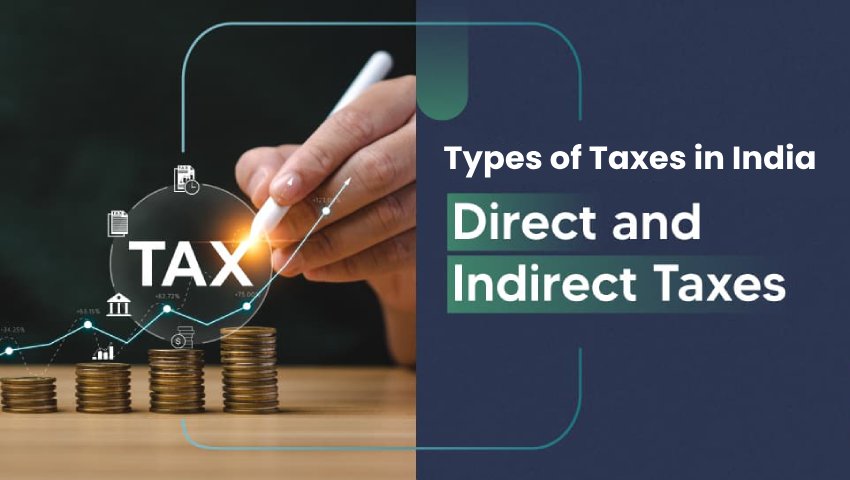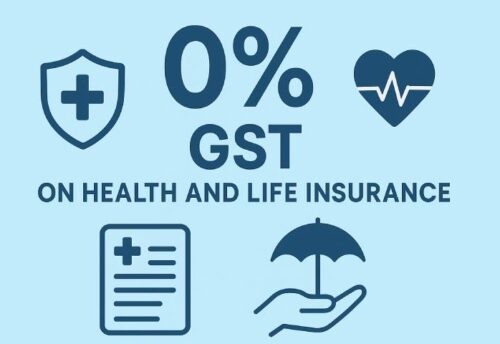
- 30/05/2025
- MyFinanceGyan
- 523 Views
- 3 Likes
- Tax
Types of Taxes in India: Direct and Indirect Taxes Explained
Taxes are mandatory contributions imposed by the Central and State Governments on individuals and businesses. These taxes are a vital source of revenue for the government and play a crucial role in nation-building—supporting infrastructure development, social welfare, and economic growth.
As responsible citizens, it is essential not only to pay taxes but also to understand the different types of taxes in India and how they affect us. Let’s break down the Indian tax structure and explore the key differences between direct and indirect taxes.
Overview of the Indian Tax System:
India follows a three-tier tax structure managed by:
- Local municipal bodies
- State governments
- Central government
Broadly, taxes in India are divided into two main categories:
- Direct Taxes
- Indirect Taxes
What is a Direct Tax?
Direct taxes are taxes levied directly on individuals or entities and are paid straight to the government. The burden of this tax cannot be shifted to another person. For example, if you are earning an income, you must pay income tax on it.
The Central Board of Direct Taxes (CBDT) regulates and administers direct taxes in India.
Key Types of Direct Taxes in India:
Income Tax:
- Levied on the income earned by individuals, HUFs, and companies.
- The tax is progressive, meaning higher incomes attract higher rates.
- It applies to incomes above a specified exemption limit.
Corporate Tax:
- Paid by companies on their profits.
- Imposed on profits from the sale of capital assets like property, shares, etc.
Securities Transaction Tax (STT):
- Applicable on the trading of securities on stock exchanges.
Wealth Tax (Abolished in 2015):
- Earlier levied on the net wealth of an individual or HUF.
Gift Tax:
- Levied on gifts received under certain conditions (taxed under income tax provisions now).
What is an Indirect Tax?
Indirect taxes are levied on goods and services rather than income or profits. These taxes are paid by consumers, but collected and remitted to the government by intermediaries like sellers or service providers. Thus, the tax burden can be shifted from one person to another.
The Central Board of Indirect Taxes and Customs (CBIC) governs indirect taxation in India.
Key Types of Indirect Taxes in India:
- A comprehensive indirect tax that replaced several taxes like VAT, excise, and service tax.
- It avoids the cascading effect of multiple taxes.
Excise Duty (Mostly subsumed under GST):
- Previously imposed on the manufacture of goods within India.
Sales Tax (Replaced by GST in most cases):
- Charged on the sale of goods. Types included manufacturer’s, wholesale, and retail sales tax.
Custom Duty:
- Levied on imported and exported goods.
Service Tax (Now part of GST):
- Was charged on services rendered.
Value Added Tax (VAT):
- Still applicable on petroleum and certain items outside the purview of GST.
Entertainment Tax, Luxury Tax, Octroi:
- Mostly merged into GST.
Key Differences Between Direct and Indirect Taxes:
Pros and Cons of Direct and Indirect Taxes:
Advantages of Direct Taxes:
- Progressive: Higher earners pay more.
- Reduces inequality and curbs inflation.
- Transparent and predictable for both the government and the taxpayer.
Disadvantages of Direct Taxes:
- Cannot be shifted to others.
- Compliance can be time-consuming and complex.
- Risk of tax evasion through fraudulent means.
Advantages of Indirect Taxes:
- Everyone contributes, even those outside the tax net.
- Easier to collect at the point of sale.
- Ensures fair distribution—essential goods are taxed lower than luxury goods.
Disadvantages of Indirect Taxes:
- Regressive: Disproportionately affects low-income individuals.
- Increases prices of goods and services.
- Consumers often unaware of how much tax they’re paying.
Summary Table of Taxes in India:
Conclusion:
Understanding the types of taxes in India is vital to being a responsible and financially aware citizen. Direct taxes affect your income and wealth, while indirect taxes are tied to your spending on goods and services.
By staying informed, you not only ensure compliance but also contribute to building a stronger and more transparent tax ecosystem in India.
Disclaimer:
The views expressed in this blog are for educational purposes only and represent the author’s perspective. This content is not intended to provide financial or legal advice or endorse any product or service.



